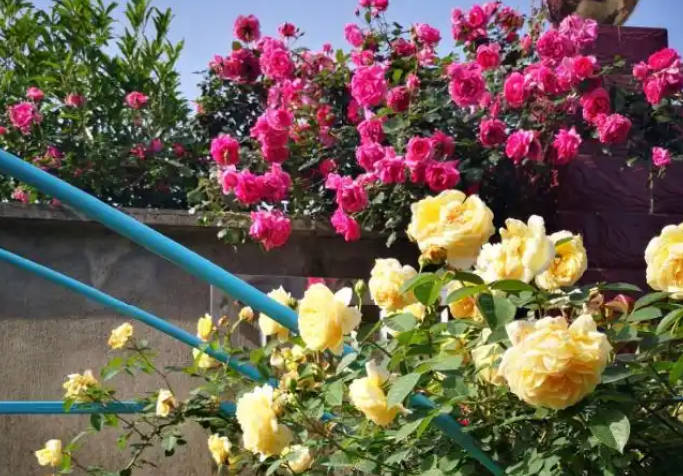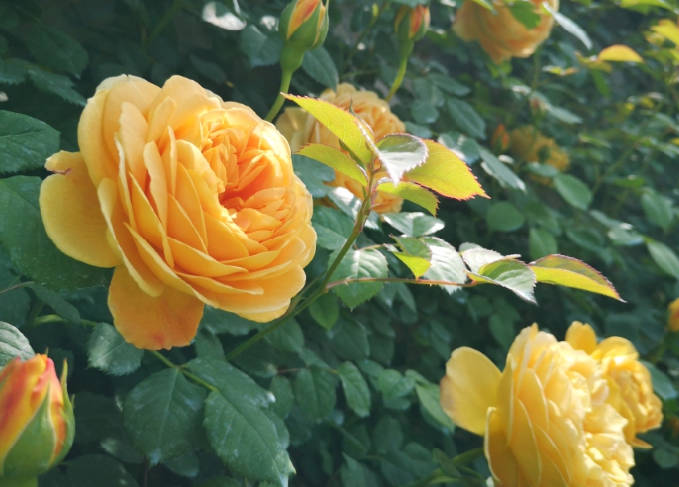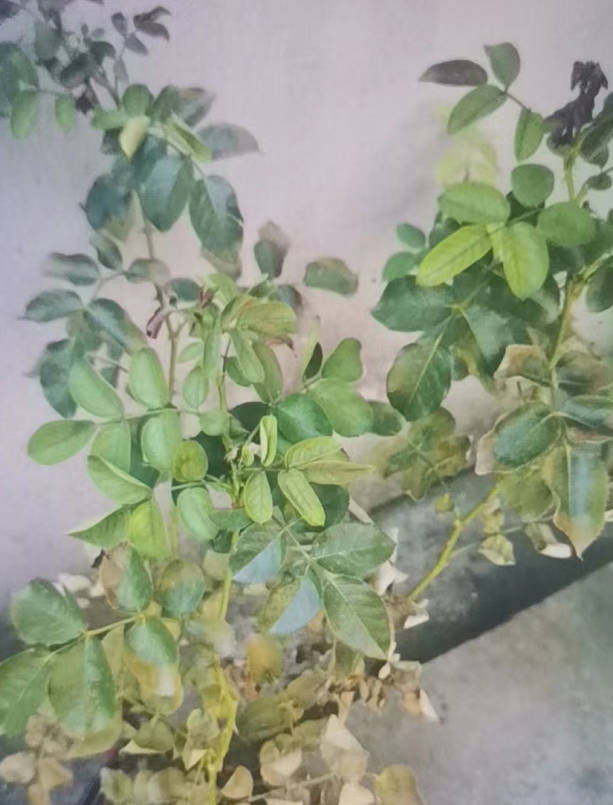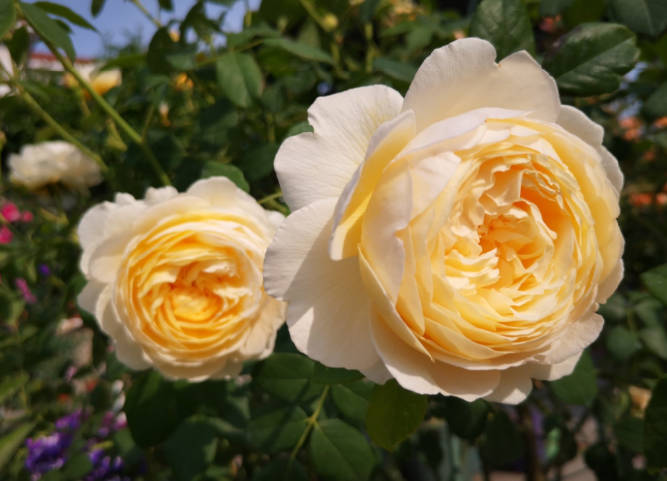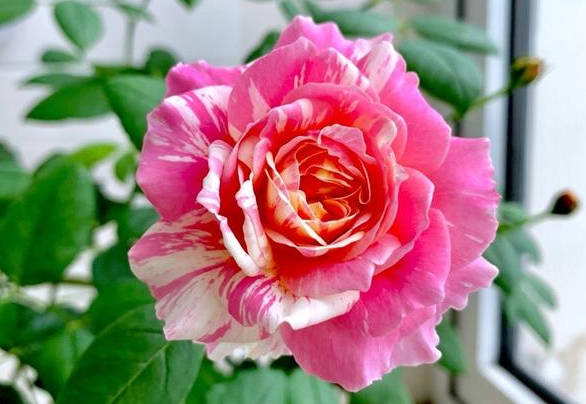How to Water Potted Roses in Summer (Complete Guide)
Many flower enthusiasts have asked about watering techniques for roses in summer, so today we will explain this topic in detail.
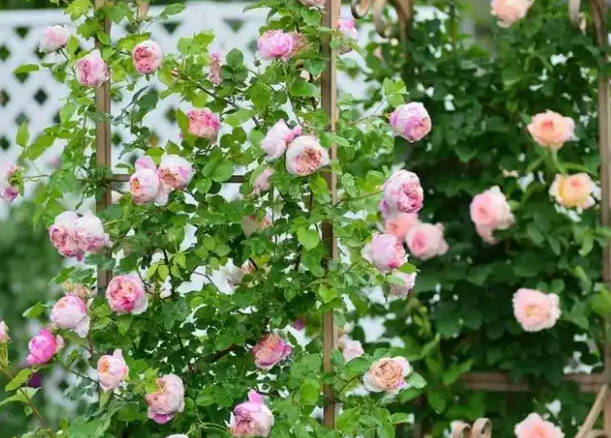
Watering methods for potted roses in summer
Watering potted roses in summer requires adjustments based on the plant’s health and growing environment; a one-size-fits-all approach is not suitable. Otherwise, improper watering can easily cause the plant to wilt.
Generally, potted roses can be categorized into the following three types:
- Healthy plants with vigorous growth
- Plants with slow growth or stunted growth but still have many leaves
- Weak seedlings with sparse leaves or even completely bare stems
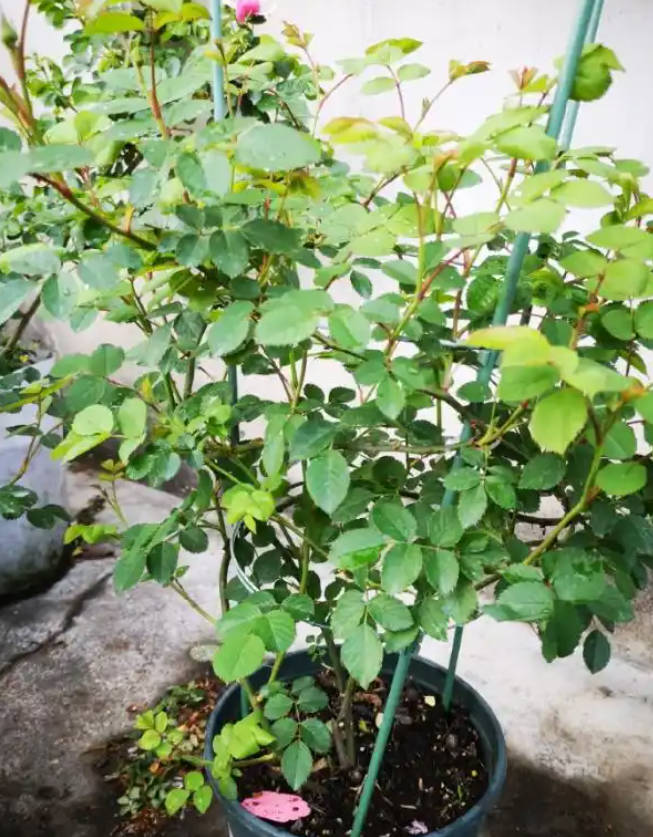
1. Healthy and vigorous potted roses
Healthy roses are typically in their vigorous growth phase during summer, may be in bloom or have just finished their first flowering period, and continue to sprout new buds and shoots.
Watering principle: water when the soil surface is dry
- What does “water when the soil surface is dry” mean? It means watering when the surface of the potting soil is dry.
- Why not “water thoroughly when completely dry”?
-
- Healthy roses have lush foliage, strong transpiration, and rapid water consumption. When the surface soil dries out, the internal soil is usually also nearly dry. If you wait until it is completely dry to water, the plant may already be slightly dehydrated, affecting root health.
-
- Suitable environment: Outdoor care in sunny, well-ventilated conditions.
(Note: Watering methods for indoor-grown roses differ; refer to the book “Rose Care Guide” for detailed recommendations.)
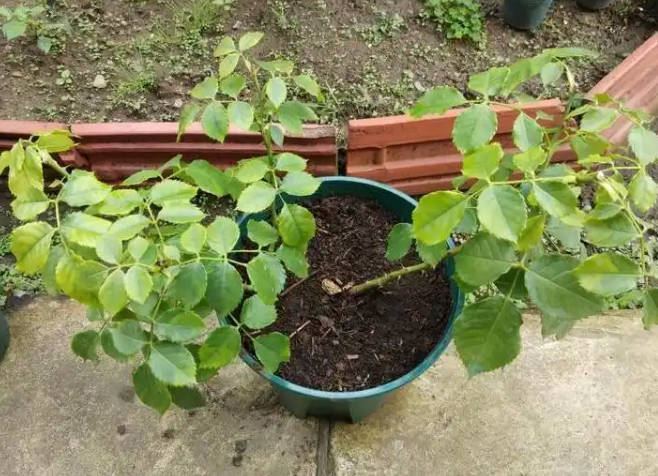
2. Roses with slow growth or stunted growth
These roses may have growth stagnation due to pests or diseases (such as black spot disease or red spider mites) or fertilizer damage, though they still have leaves, their vitality is low.
Watering principle: Caution in watering
Due to reduced transpiration, the soil surface may feel dry while the interior remains moist. Overwatering can lead to root rot, further weakening the plant.
Judgment methods:
- Finger test: Water only after the top 2 cm of soil is dry.
- Pot weight test: Water only when the pot feels noticeably lighter.
Adjusting frequency: Observe for 1–2 weeks to find the appropriate watering rhythm.
3. Weak or bare stems
These roses have almost no leaves, with extremely weak photosynthesis and transpiration, requiring special care.
Care tips:
- Avoid direct sunlight: Move to a location with morning partial shade to reduce water evaporation pressure.
- Strict water control: Keep the potting soil slightly dry; water only after the top 3 cm has dried out.
- Rain protection: Cover during prolonged rainy periods to prevent waterlogging and root rot.
Key tip: Potting soil aeration is critical for weak seedlings. If the soil is compacted or drains poorly, replace it promptly. (For specific soil mixing methods, refer to the “Rose Care Guide” or previous articles.)

